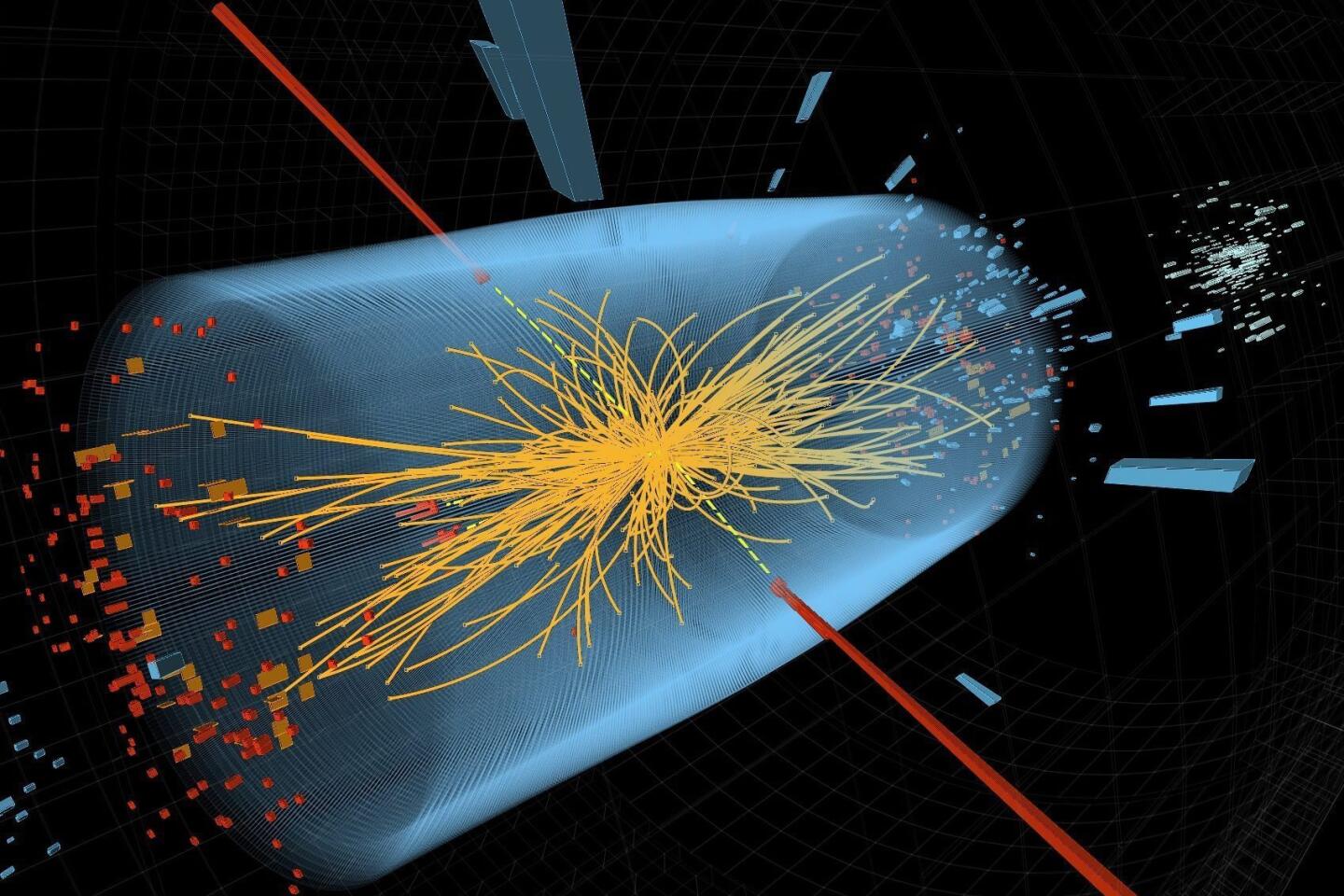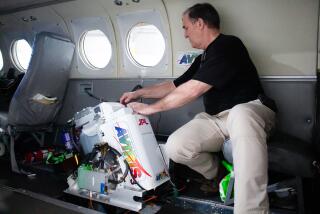Six science stories we can’t wait to follow in 2015
- Share via
Some serious groundwork has been laid. Some amazing instruments are turning on. Some incredible destinations are in sight. If you ask us, 2015 is going to be an awesome year in science.
From solar system exploration to new adventures in particle physics to the possible defeat of a microscopic foe, here are some of the science stories we can’t wait to follow in the coming year.
1. Our first good look at Pluto
In 2015 humans will get a good look at Pluto -- for the very first time. Our telescopes take amazing images of distant galaxies, but the best pictures of the dwarf planet are fuzzy and difficult to interpret. That’s about to change.
After a nine-year journey across nearly 3 billion miles of the solar system, NASA’s New Horizons spacecraft and its high-definition cameras are closing in on Pluto. A suite of instruments will start taking scientific measurements on Jan. 15. The closest approach, when the spacecraft gets within 7,700 miles from the planet, is scheduled for July. Read more.
2. Could this be the year of the AIDS vaccine?
Microbiologists say that new insights into the structure of HIV’s protein spikes -- the weapons it uses to enter host cells -- have raised hopes for a vaccine that can stop the virus that causes AIDS.
In the last few years, scientists have realized that some AIDS patients have developed broadly neutralizing antibodies that are not fooled by HIV’s infamous ability to camouflage itself. In October, researchers at Yale School of Medicine and the National Institute of Allergy and Infectious Diseases showed that these antibodies were able to attach to HIV spikes and disable them.
“Personally, working in the HIV vaccine field for 16 years, I have never been so positive,” said Rogier Sanders, a Cornell University microbiologist who studies the spikes but was not involved in that research. “I think the coming year will see some major steps forward thanks to this.” Read more.
3. CERN comes back, with more power than ever
After a two-year break, the Large Hadron Collider at the European Organization for Nuclear Research (CERN) in Geneva is about to start smashing protons together at greater speeds than ever before. The largest and fastest particle accelerator in the world is set to start up again in March. When it is turned on, the two beams of protons that fly around its 17-mile loop at close to the speed of light will collide with nearly double the energy of the previous run.
Scientists are not sure what they will find this time around, but some possibilities include particles associated with dark energy and dark matter. There may even be particles that could provide evidence for the the theory of supersymmetry. Read more.
4. An encounter with a very big asteroid
In March, NASA’s Dawn spacecraft is set to rendezvous with Ceres, the largest member of the asteroid belt and one of five dwarf planets in the Solar System. (The others are Haumea, Makemake, Eris and Pluto.) Ceres is Dawn’s second stop; its first was Vesta, which the spacecraft circled from July 2011 to September 2012.
While Ceres and Vesta are both enormous asteroids, they’re actually very different. Vesta, the second-biggest asteroid in the belt, is elliptical and very dry, while Ceres is spherical and may harbor a subsurface ocean. Both of these “protoplanets” could shed light on the early solar system’s history. Read more.
5. More comet science, courtesy of Rosetta
The world watched breathlessly in 2014 as the European Space Agency’s Rosetta orbiter caught up with a comet and, for the first time ever, gently dropped a lander onto its surface.
The lander, Philae, has been silent since Nov. 14. But the mission isn’t over yet. Scientists say Philae could turn back on as the comet gets closer to the sun, recharging its solar-powered batteries. If so, it may send more data back to scientists on Earth.
In the meantime, Rosetta will continue to escort the comet as it flies toward the sun, watching as it spews ever larger jets of gas and dust. The comet reaches perihelion (the point when it is closest to our star) in August 2015. When it does, Rosetta will be right by its side. Read more.
6. The search for ripples in the structure of spacetime continues
Scientists in the BICEP2 collaboration rocked the astrophysics world when they announced in March that they had picked up signs of cosmic inflation -- the universe’s giant growth spurt shortly after the Big Bang -- as well as evidence of gravitational waves, ripples in the structure of spacetime that have been theorized but never detected. Data from the European Space Agency’s Planck spacecraft, however, allowed other researchers to poke holes in the findings, leaving the discovery up for debate.
Another paper will be coming out in January, according to Caltech astrophysicist James Bock, one of the lead scientists on the BICEP2 team. The scientists will continue to scan the skies in 2015 with their next-generation experiment, BICEP3.
Another experiment called the Laser Interferometer Gravitational Wave Observatory is directly searching for gravitational waves. No luck over its 2002-10 run, but the scientists at LIGO (which operates two facilities, one in Washington state and the other in Louisiana) are set to unleash their newly built Advanced LIGO detectors, designed to be 10 times as sensitive as their predecessors.
“We’re planning to resume our search for gravitational waves with Advanced LIGO in late summer or early fall 2015,” David Reitze, executive director of the LIGO Laboratory at Caltech, wrote in an email. “Hopefully, we’ll get some interesting results soon after!”
For more great stories in 2015 follow @LATimesScience and “like” Los Angeles Times Science & Health on Facebook.







